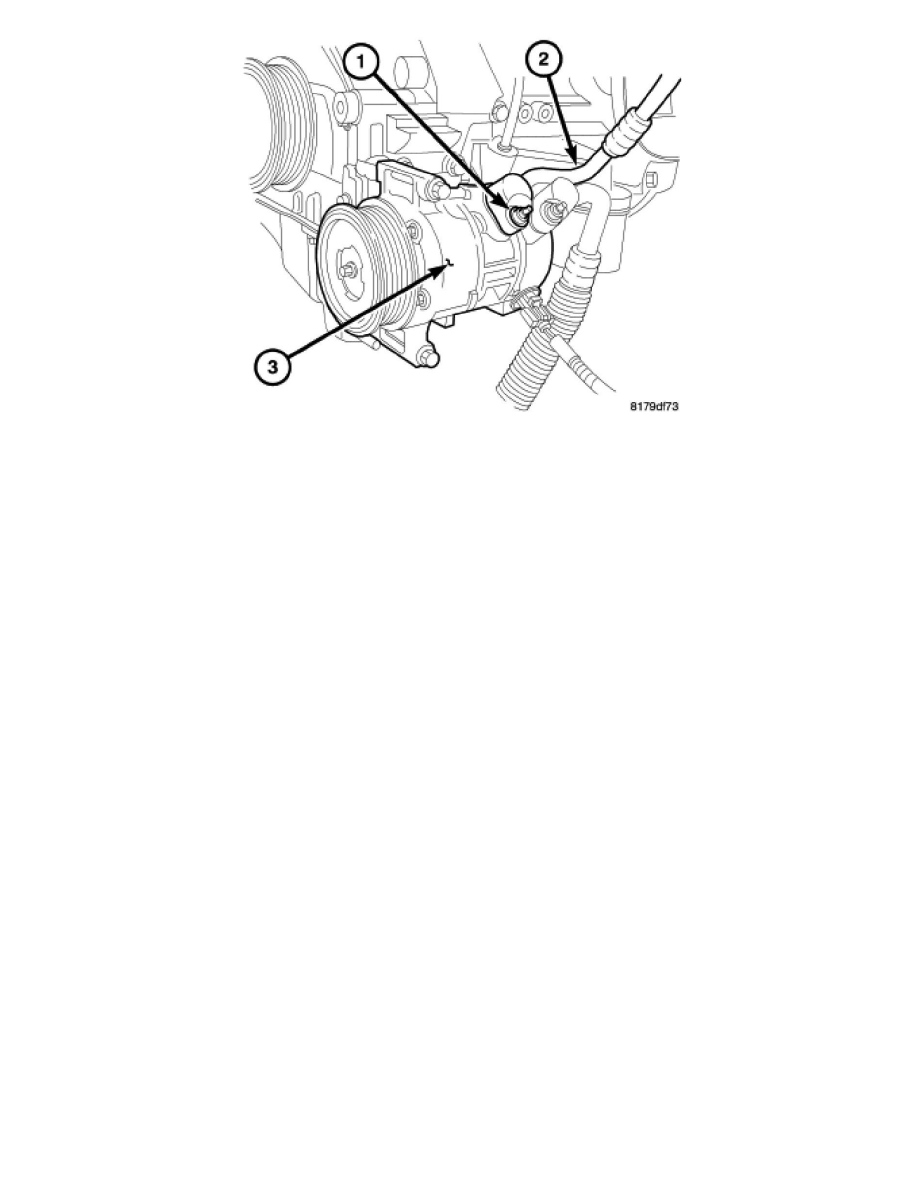Patriot 2WD L4-2.0L (2008)

9. Raise and support the vehicle.
10. Remove the tape or plugs from the discharge line fitting and the compressor port.
11. Lubricate a new rubber O-ring seal with clean refrigerant oil and install it and a new gasket onto the discharge line fitting. Use only the specified
O-ring as it is made of a special material for the R-134a system. Use only refrigerant oil of the type recommended for the A/C compressor in the
vehicle.
12. Connect the A/C discharge line (2) to the A/C compressor (3).
13. Install the nut (1) that secures the A/C discharge line to the A/C compressor. Tighten the nut to 20 Nm (15 ft. lbs.).
14. Install the splash shield onto the right side frame rail See: Body and Frame/Fender/Rear Fender/Rear Fender Liner/Service and Repair/Rear
Wheelhouse Splash Shield - Installation.
15. Lower the vehicle.
16. Reconnect the negative battery cable.
CAUTION: Do NOT run the engine with a vacuum pump in operation or with a vacuum present within the A/C system. Failure to follow
this caution will result in serious A/C compressor damage.
17. Evacuate the refrigerant system See: Service and Repair/Refrigerant System Evacuate.
18. Adjust the refrigerant oil level See: Service and Repair/Refrigerant Oil Level.
19. Charge the refrigerant system See: Service and Repair/Refrigerant System Charge.
Liquid Line
INSTALLATION
CAUTION: Be certain to adjust the refrigerant oil level when servicing the A/C refrigerant system See: Service and Repair/Refrigerant Oil
Level. Failure to properly adjust the refrigerant oil level will prevent the A/C system from operating as designed and can cause serious A/C
compressor damage.
CAUTION: The A/C liquid line must be replaced if an internal failure of the A/C compressor has occurred. Failure to replace the A/C liquid
line can prevent the A/C system from operating as designed and can cause serious A/C compressor damage.
NOTE: When replacing multiple A/C system components, refer to the Refrigerant Oil Capacities chart to determine how much oil should be
added to the refrigerant systemSee: Service and Repair/Refrigerant Oil Level.
NOTE: Replacement of the refrigerant line O-ring seals and gaskets is required anytime a refrigerant line is opened. Failure to replace the
rubber O-ring seals and metal gaskets could result in a refrigerant system leak.
NOTE: LHD model shown in illustrations. RHD model similar.
